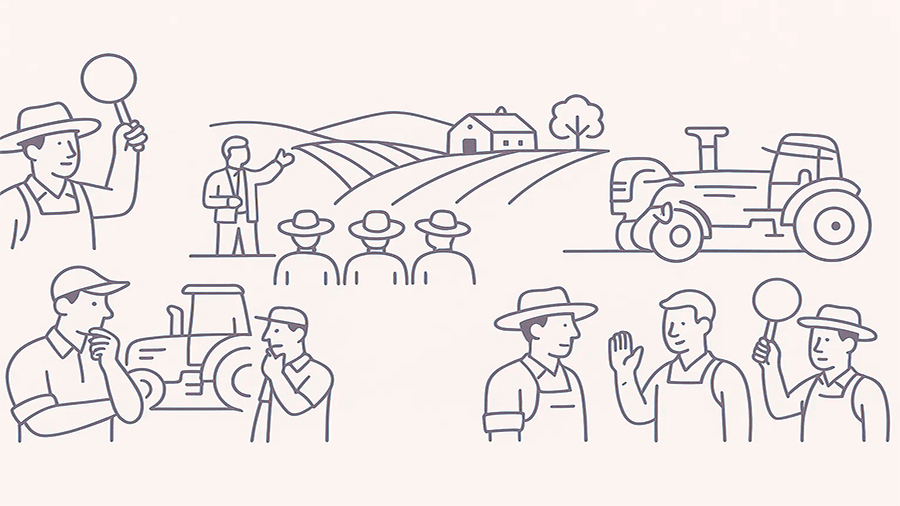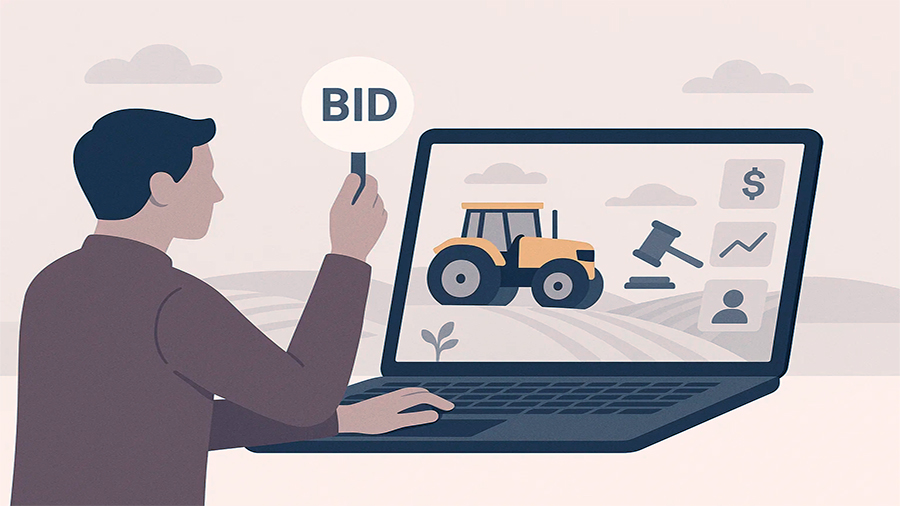Agricultural Auctions: Buying And Selling Land And Equipment
Across rural economies, auctions remain one of the most active ways to buy and sell farmland, tractors, and farming tools. They bring together sellers needing liquidity and buyers looking for opportunities, often creating faster deals than private negotiations. For farmers, auctions are not only about clearing out unused machinery or transferring land but also about discovering fair market value through competitive bidding. Investors join these spaces too, seeing agriculture as a stable long-term asset. Whether in a town hall, an open field, or an online platform, agricultural auctions shape how farms evolve and how land and equipment change hands.
Why Agricultural Auctions Matter
Agriculture is capital-intensive, and every season requires resources. Auctions provide a quick way for farmers to upgrade equipment, lease or buy land, or liquidate assets during tough times. Unlike slow private sales, auctions deliver certainty: a date, a crowd, and a result. Competitive bidding often ensures sellers achieve reasonable prices, while buyers sometimes secure bargains compared to dealer or retail channels. Auctions also serve as indicators of broader market health. Rising land prices at auctions can signal strong commodity demand, while falling equipment bids might reflect tighter farm margins. Beyond economics, auctions hold social weight—they are events where farming communities gather, network, and exchange knowledge. This dual role makes them a cornerstone of agricultural markets.
The Speed Factor
Farmers under financial stress value auctions for speed. Land or equipment can be turned into cash in days, compared to months in traditional sales. For buyers, the same speed allows rapid access to assets needed for planting or expansion.
| Benefit For Sellers | Benefit For Buyers |
|---|---|
| Quick liquidity | Potential bargains |
| Transparent pricing through bidding | Access to assets without long negotiations |
| Large pool of interested participants | Certainty of transaction |
Types Of Agricultural Auctions
Not all auctions are the same. Some focus exclusively on land, while others specialize in machinery, livestock, or mixed agricultural assets. Each format carries different dynamics and appeals to different audiences. Land auctions usually attract investors and farmers seeking expansion, while machinery auctions attract those looking for affordable equipment upgrades. Increasingly, online auctions expand participation beyond local buyers, connecting regional sellers to global demand. These variations reflect the diversity of agricultural markets, where both small family farms and large agribusinesses play roles. Knowing which type of auction fits your goals is crucial before stepping in as a bidder or seller.
Land Auctions
These events often generate excitement. With farmland seen as a finite resource, competition can be fierce. Buyers range from neighbors expanding acreage to institutional investors adding farmland to portfolios.
Equipment Auctions
Here, the focus is on tractors, combines, irrigation systems, and storage units. Farmers often attend to replace aging machinery or find cost-effective alternatives to new equipment from dealers.
How Farmers Use Auctions To Grow
Farmers approach auctions with both caution and strategy. For those looking to expand, land auctions offer the chance to secure adjacent plots that improve efficiency and reduce transport costs. For others, equipment auctions help modernize operations without the heavy burden of new retail prices. Auctions also allow retiring farmers to sell assets efficiently, ensuring equipment continues to be used productively by others. In every case, the process links buyers and sellers in a way that reduces the friction of private transactions. The knowledge of market pricing gained through auctions also helps farmers plan budgets and assess the value of their holdings.
Reducing Entry Barriers
For younger or smaller farmers, auctions can lower entry barriers. Buying used equipment or smaller land parcels at competitive prices makes farming more accessible than buying from traditional dealers or negotiating with established landowners.
| Seller Scenario | Outcome |
|---|---|
| Retiring farmer selling machinery | Assets transferred quickly to active users |
| Farmer under financial stress | Immediate liquidity to cover debts |
| Estate sale of farmland | Land sold transparently at market-driven price |
The Role Of Investors In Agricultural Auctions
It is not only farmers who benefit from auctions. Investors see agricultural land as a hedge against inflation and a long-term store of value. Institutional buyers, pension funds, and private investors participate in auctions to secure farmland or storage facilities. Equipment auctions also attract traders who resell machinery internationally, leveraging price differences between markets. This external participation brings liquidity and higher bids but also raises concerns about pricing local farmers out of the market. The growing presence of non-farm buyers highlights how agricultural auctions sit at the crossroads of community farming and global finance. Both groups—farmers and investors—shape outcomes, making auctions dynamic spaces where local and global interests collide.
Balancing Community And Market Forces
While investors bring money, they also change dynamics. For local farmers, competing with large investors can feel daunting. Yet investor participation ensures auctions remain vibrant, with stronger demand raising overall asset values.

Online Platforms And The Future Of Agricultural Auctions
Digitalization has transformed how auctions function. Farmers and investors no longer need to attend physically. Online platforms allow bidding across time zones, opening local events to global participants. This widens the pool of buyers and increases competition, often driving up prices. For sellers, this means better exposure and higher final bids. For buyers, it offers convenience but also raises challenges, such as not being able to physically inspect machinery or land before bidding. Technology has also introduced new tools like real-time pricing analytics, bidder history, and market insights. These innovations make auctions more accessible while preserving their competitive essence.
The Challenge Of Trust
Online auctions rely on accurate descriptions, photos, and digital contracts. Building trust in digital formats remains critical to ensuring long-term adoption. Farmers accustomed to in-person events still value shaking hands, but convenience is steadily shifting preferences.
The Risks Of Agricultural Auctions
Despite their benefits, auctions carry risks. Bidding wars may push buyers to pay more than intended, eroding profitability. Sellers may also face disappointment if turnout is low, leading to below-expected bids. For equipment, the risk of hidden defects exists, particularly in online formats where inspection is limited. Financing also plays a role: buyers may commit before securing loans, creating difficulties in closing deals. Recognizing these risks is part of auction strategy. Successful participants set limits, research assets, and prepare financing in advance. Without this preparation, the fast pace of auctions can turn opportunity into financial strain.
Discipline In Bidding
One of the biggest mistakes is letting excitement override discipline. Auctions thrive on adrenaline, but smart participants know their limits and stick to them.
The Conclusion
Agricultural auctions are more than sales events—they are vital mechanisms for moving land and equipment through farming communities and investor networks. They provide liquidity, transparency, and opportunities for both farmers and financial players. As technology reshapes their reach, auctions are becoming increasingly global while still serving local needs. The balance between benefits and risks depends on preparation and discipline. For those who understand the dynamics, agricultural auctions remain powerful tools for growth, transition, and long-term stability in the agricultural economy.





